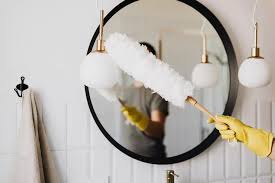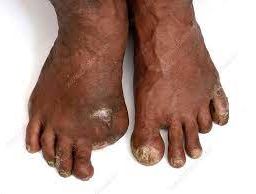
How to Create an Allergy Proof Home: Tips and Tricks
Welcome to a guide on how to allergy proof your home, creating a sanctuary free from allergens. Discover effective strategies for bedrooms, living rooms, and kitchens to eliminate triggers and breathe easy in a healthier living environment. Let’s embark on a journey to transform your space into an allergy-resistant haven.

Allergies can be a real nuisance, causing sneezing, itching, and discomfort. If you suffer from allergies, you know how important it is to create a safe haven in your home where you can breathe freely. Allergies can turn our own homes into battlefields, triggering unpleasant symptoms like sneezing, coughing, watery eyes, and congestion. To create a safe haven and breathe easy, it’s essential to allergy proof your home. By implementing a few simple strategies, you can minimize allergens and create a healthier living environment. Fortunately, there are several steps you can take to allergy proof your home and minimize the triggers that can set off your symptoms. In this post, we will explore effective tips on how to allergy proof your home and create a sanctuary where you can find relief from allergens.
How to Allergy Proof Your Bedroom
The bedroom is where you spend a significant amount of time, so it’s crucial to make it as allergen-free as possible. Start by investing in allergen-proof bedding, including dust mite-proof mattress and pillow covers. These covers create a barrier between you and the allergens, preventing them from settling into your bedding. Additionally, wash your bedding regularly in hot water to kill any dust mites or pollen that may have accumulated.
Another important step is to remove any unnecessary clutter from your bedroom. Clutter can collect dust and make cleaning more challenging. Keep surfaces clear and minimize the number of items stored under your bed. Regularly vacuum the floor and dust surfaces using a damp cloth to capture allergens effectively.
Lastly, consider removing carpets from your bedroom if possible. Carpets trap allergens like dust mites, pet dander, and pollen, making it difficult to keep the air clean. Opt for hardwood or tile flooring instead, which can be easily cleaned and are less likely to harbor allergens.
How to Allergy Proof Your Living Room
The living room is often the heart of the home, where family and friends gather. To allergy proof this space, start by choosing furniture made of leather or vinyl instead of fabric. These materials are less likely to trap allergens and can be easily wiped clean. If you prefer fabric upholstery, opt for microfiber or leather that can be regularly vacuumed to remove dust and pet dander.
Regular cleaning is essential in the living room. Vacuum upholstered furniture, curtains, and blinds frequently to remove allergens. Consider using a vacuum cleaner with a HEPA filter, as it can capture smaller particles that may trigger allergies. Dust surfaces with a damp cloth and avoid using feather dusters, as they tend to spread allergens into the air.
Maintaining proper humidity levels is also crucial in the living room. High humidity can encourage mold growth, while low humidity can cause dryness and irritate your respiratory system. Use a dehumidifier or air conditioner to keep humidity levels between 30% and 50%.
How to Allergy Proof Your Kitchen
The kitchen is not exempt from allergens, especially if you have food allergies. To allergy proof this area, start by keeping your kitchen clean and free of food debris. Wipe down countertops, tables, and chairs regularly to prevent the buildup of allergens. Pay special attention to areas where food is prepared or consumed.
Proper ventilation is essential in the kitchen to prevent the accumulation of cooking fumes and airborne particles. Use an exhaust fan or open windows when cooking to improve air circulation and reduce the risk of triggering allergies.
If you have food allergies, it’s crucial to keep your pantry organized. Store allergenic foods separately and label them clearly to avoid cross-contamination. Regularly check expiration dates and discard any expired or spoiled items.
How to Allergy Proof Your Bathroom
The bathroom can be a breeding ground for mold and mildew, which are common allergens. To allergy proof your bathroom, ensure proper ventilation by using an exhaust fan or opening windows after showering. This will help reduce moisture levels and prevent mold growth.
Regular cleaning is essential in the bathroom to keep allergens at bay. Clean surfaces, including sinks, countertops, and shower curtains, with a mildew-resistant cleaner. Wash towels and bath mats regularly in hot water to kill any dust mites or allergens that may have accumulated.
Avoid using scented products in the bathroom, such as air fresheners or scented candles, as they can trigger allergies in some individuals. Opt for fragrance-free or hypoallergenic products instead.
Other Allergy Proof Tips

- Keep It Clean: Regular cleaning is crucial to minimize allergens in your home. Dust and vacuum regularly, paying special attention to carpets, upholstery, and curtains where allergens can accumulate. Use a vacuum cleaner with a HEPA (High-Efficiency Particulate Air) filter to capture tiny particles effectively. Wipe down surfaces with a damp cloth to avoid spreading dust into the air.
- Maintain Optimal Humidity Levels: Maintaining optimal humidity levels is essential for controlling allergens. High humidity can promote mold and dust mite growth, while low humidity can lead to dryness and irritation. Invest in a hygrometer to monitor humidity levels and aim for a range of 30-50%. Use a dehumidifier in damp areas like basements, bathrooms, and laundry rooms, and consider using a humidifier in dry climates or during winter months.
- Create a Pet-Friendly Zone: If you have allergies to pet dander, creating a designated pet-free zone can provide relief. Keep pets out of bedrooms, off furniture, and consider using allergen-resistant bedding covers. Regularly groom your pets, including brushing and bathing, to minimize dander. Additionally, wash pet bedding regularly to remove allergens effectively.
- Eliminate Dust Mites: Dust mites are common triggers for allergies. To reduce their presence, wash bedding in hot water weekly and consider using allergen-proof covers for mattresses and pillows. Avoid using heavy curtains and opt for washable blinds or shades instead. Minimize clutter, as it can provide hiding places for dust mites, and regularly clean and vacuum your home to reduce dust accumulation.
- Control Mold Growth: Mold can exacerbate allergies and respiratory issues. Prevent mold growth by addressing any moisture issues promptly. Repair leaks, improve ventilation in areas prone to dampness (such as bathrooms and kitchens), and clean visible mold with mold-killing solutions. Ensure proper ventilation in your home by using exhaust fans or opening windows when cooking or showering.
- Purify the Air: Invest in air purifiers with HEPA filters to effectively remove allergens from the air. Place them in frequently used areas like bedrooms and living rooms for maximum benefit. Regularly clean and replace filters to maintain their efficiency. Additionally, consider using indoor plants that have air-purifying properties, such as snake plants or peace lilies, to naturally filter the air.
- Keep Windows Closed: While fresh air is invigorating, open windows can allow pollen and other outdoor allergens to enter your home. Keep windows closed, especially during peak pollen seasons. If you need to ventilate your home, use window screens or filters designed to block allergens.

Creating an allergy proof home is a continuous process that requires regular cleaning, organization, and maintenance. By focusing on key areas such as the bedroom, living room, kitchen, and bathroom, you can significantly reduce allergens and create a safe haven for yourself and your family. Remember to invest in allergen-proof bedding, keep surfaces clean and clutter-free, and maintain proper ventilation throughout your home. With these steps, you can minimize allergy triggers and enjoy a healthier, more comfortable living environment.
By implementing these simple yet effective strategies, you can allergy proof your home and create a safe haven from allergens. Regular cleaning, maintaining optimal humidity levels, creating pet-free zones, eliminating dust mites and mold, purifying the air, and keeping windows closed during peak allergy seasons can significantly reduce allergens and provide relief. Remember, a healthy home is the foundation for a healthy life, and by taking proactive steps to allergy proof your home, you can create a space where you can breathe easy and enjoy the comforts of your own abode.
Disclaimer: The information provided in this content is for general informational purposes only. It is not intended as medical or healthcare advice, diagnosis, or treatment. Always seek the advice of a qualified healthcare professional with any questions you may have regarding a medical condition or healthcare decisions.















